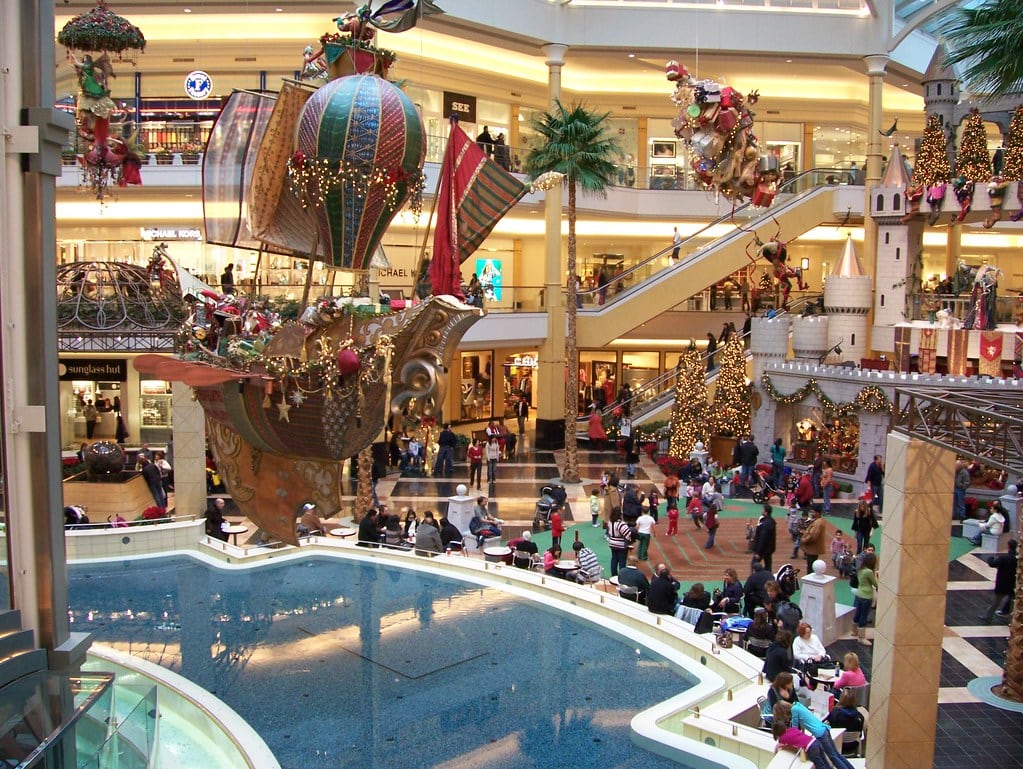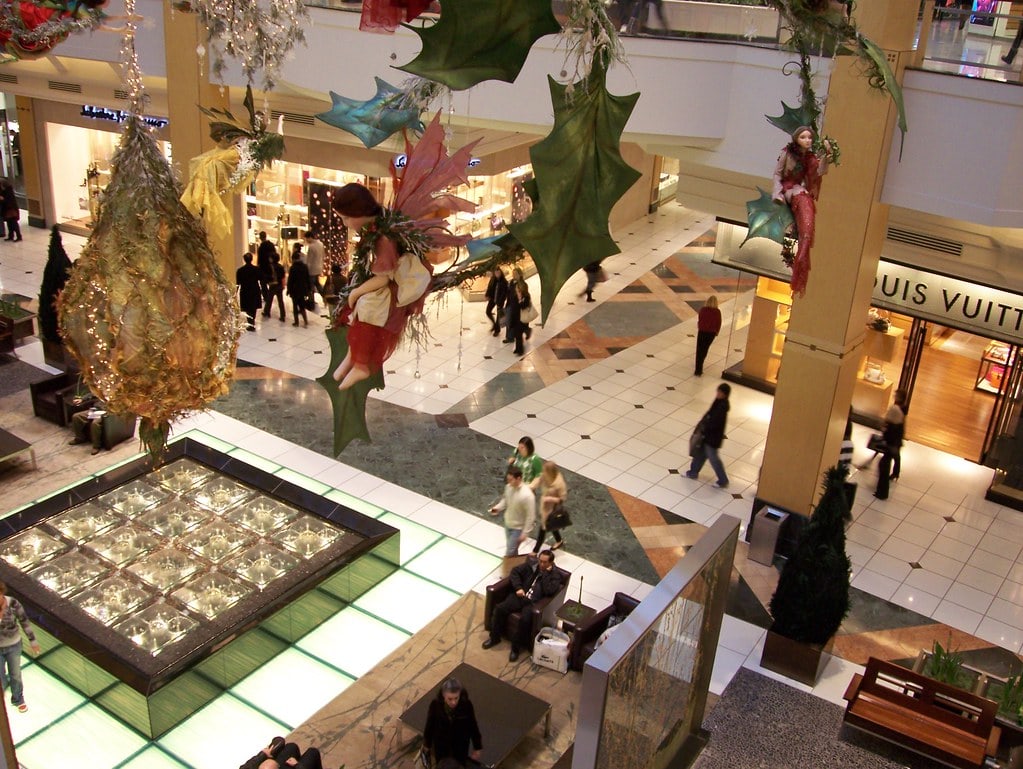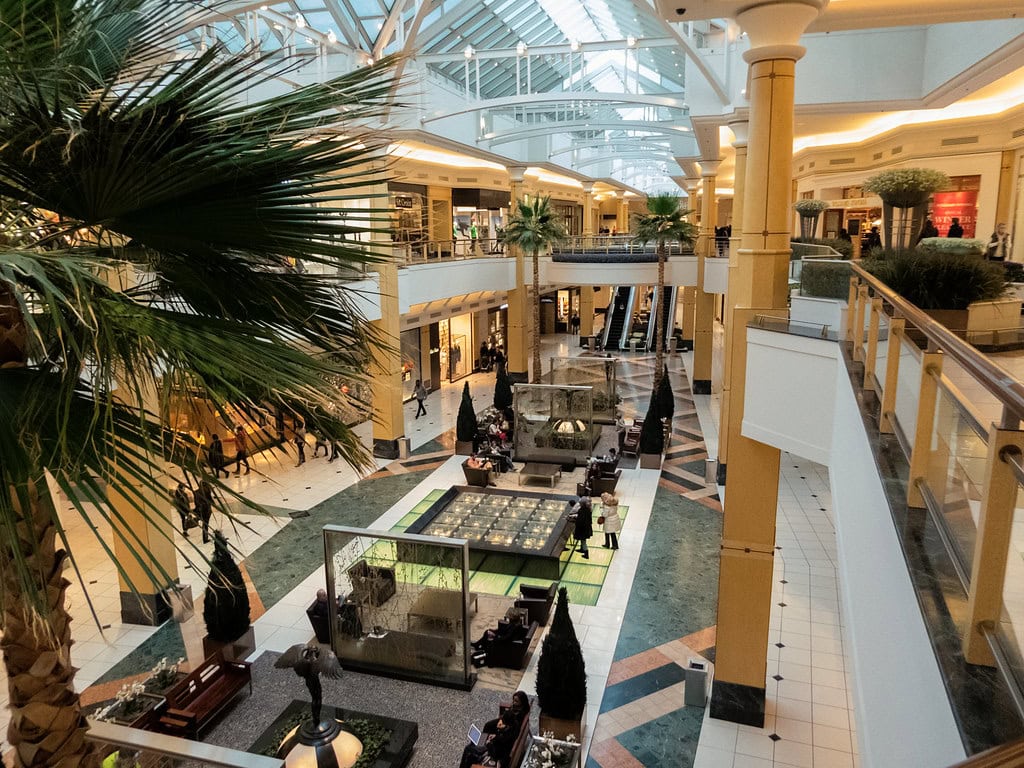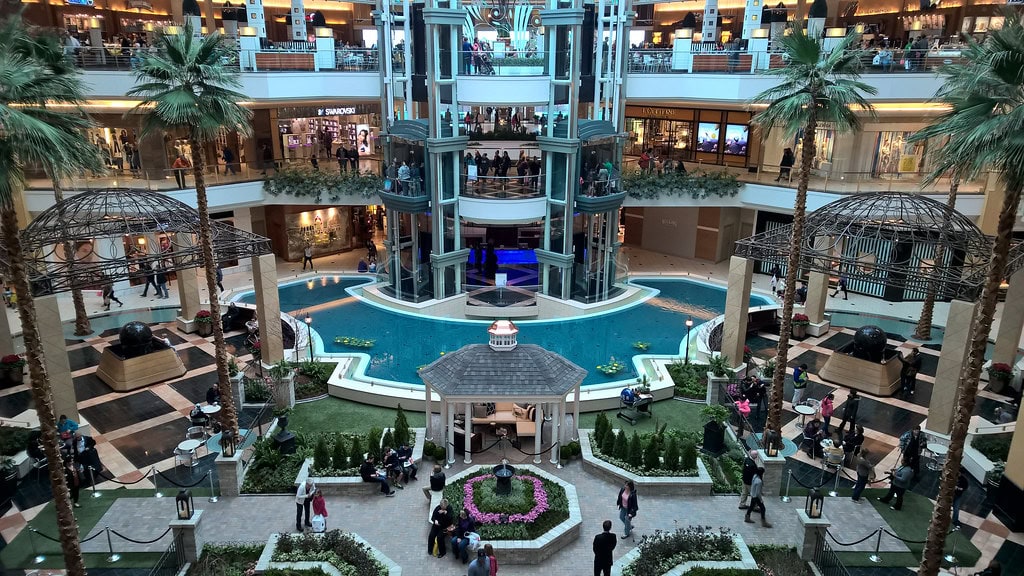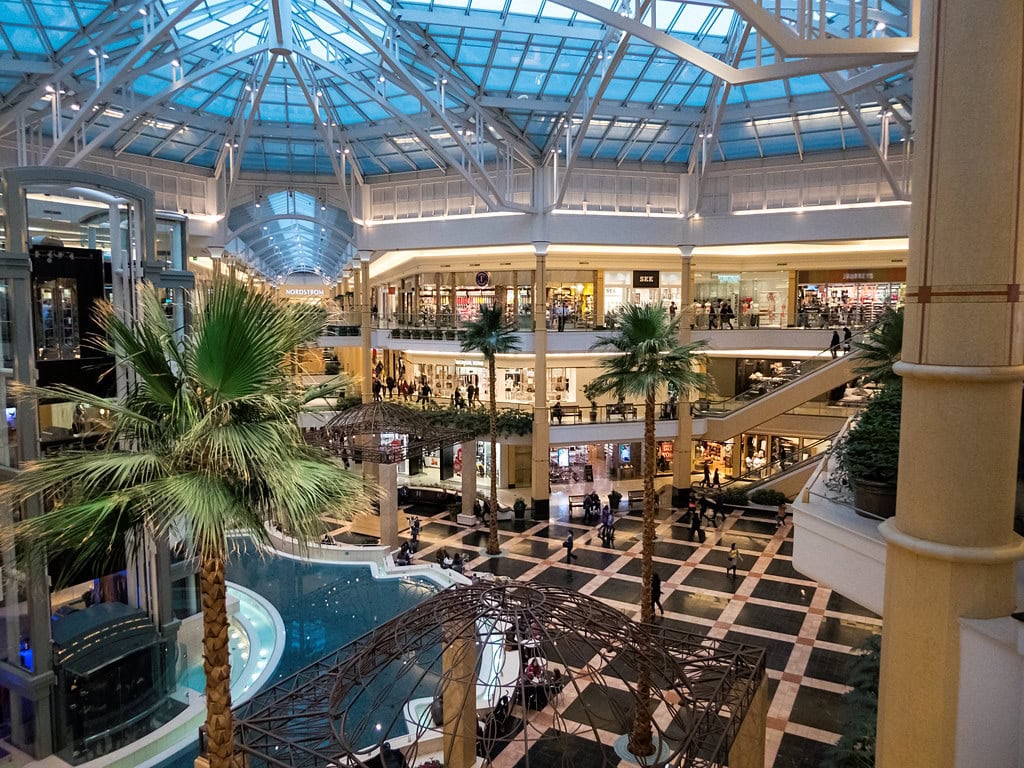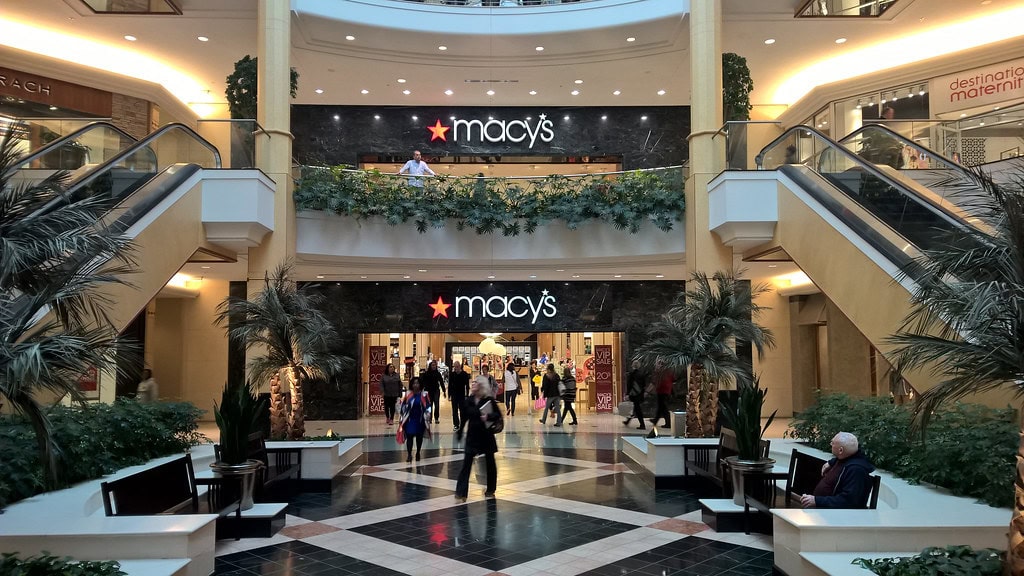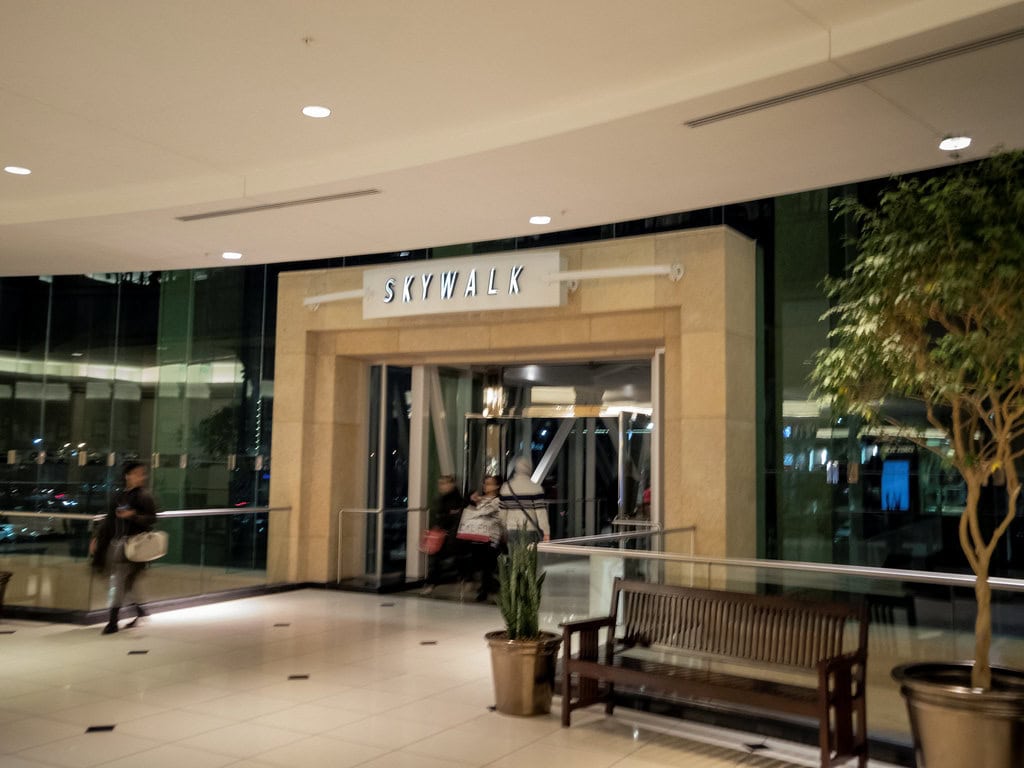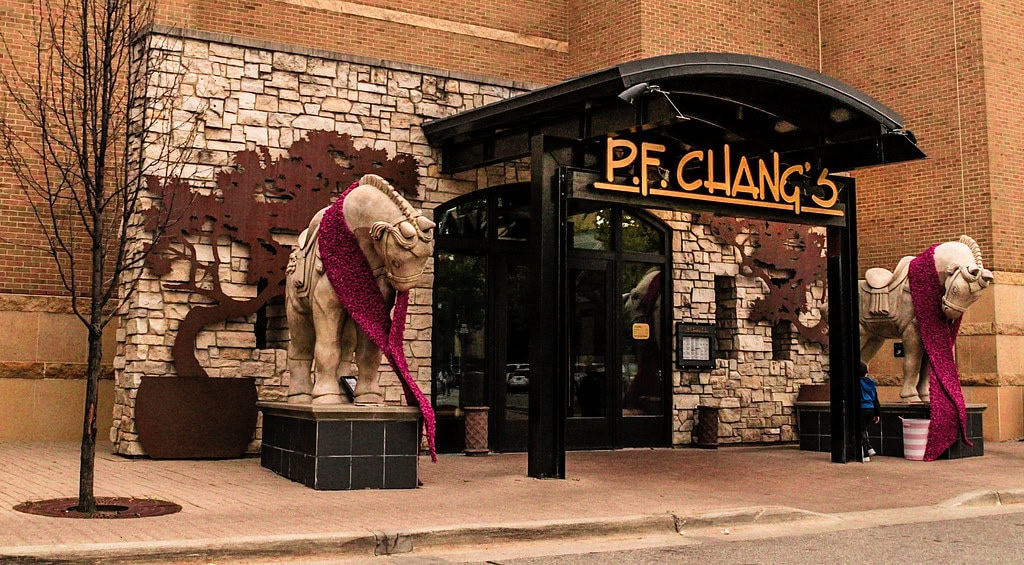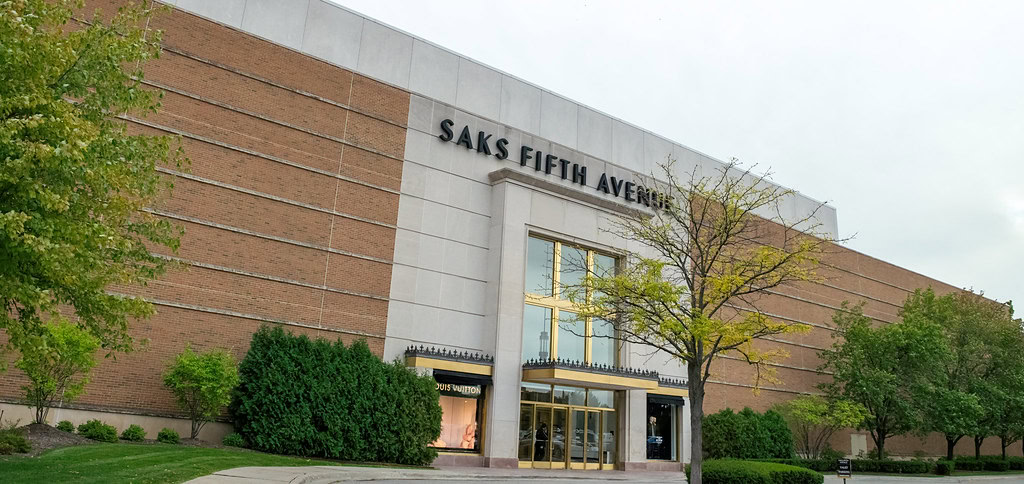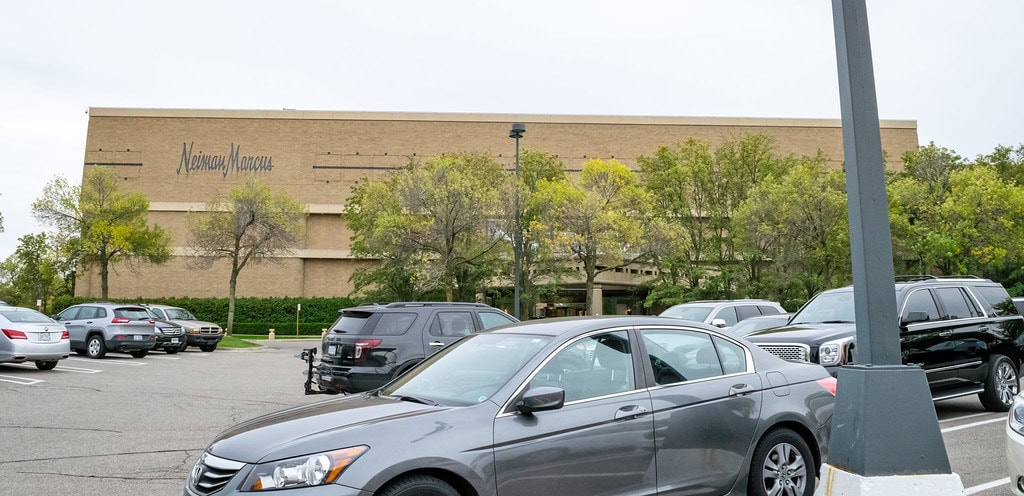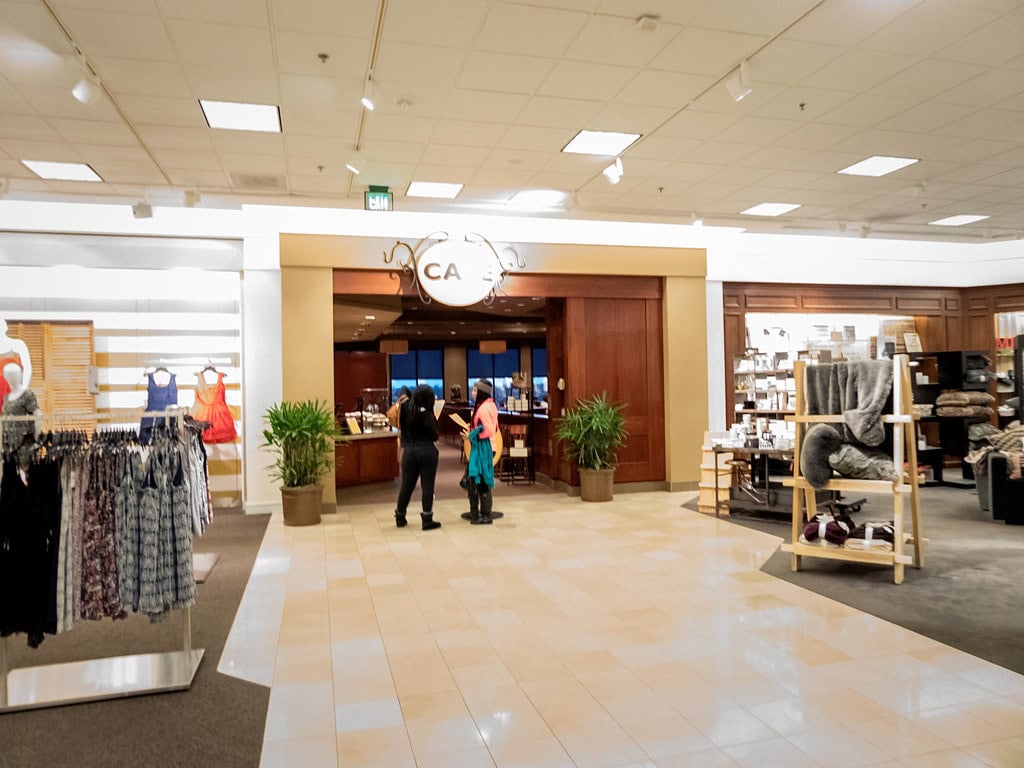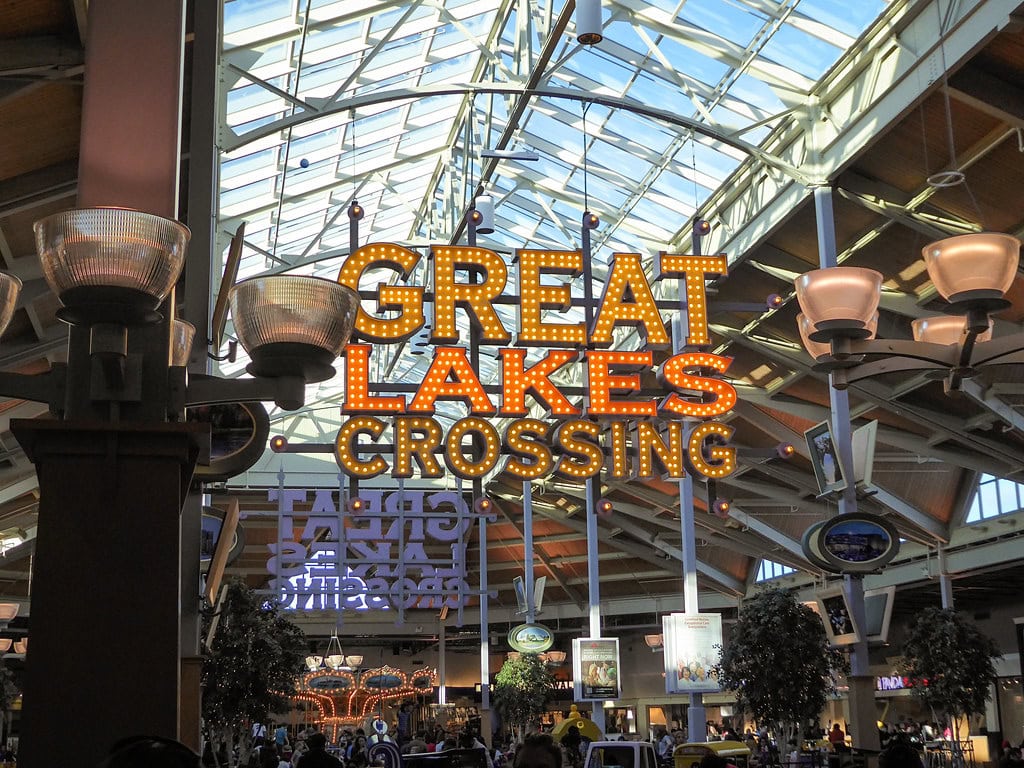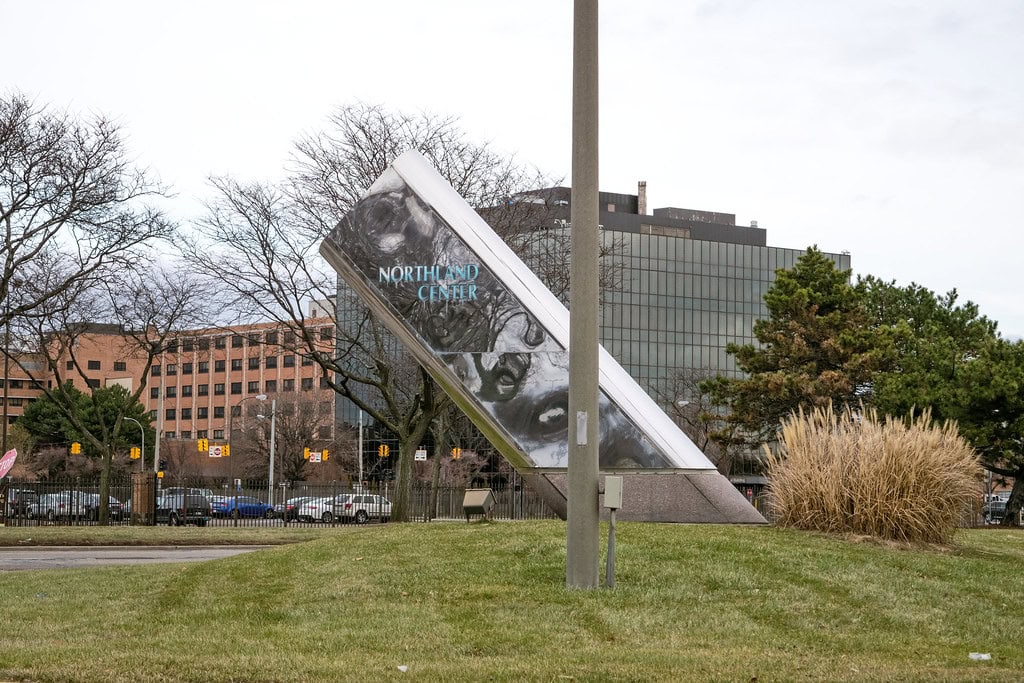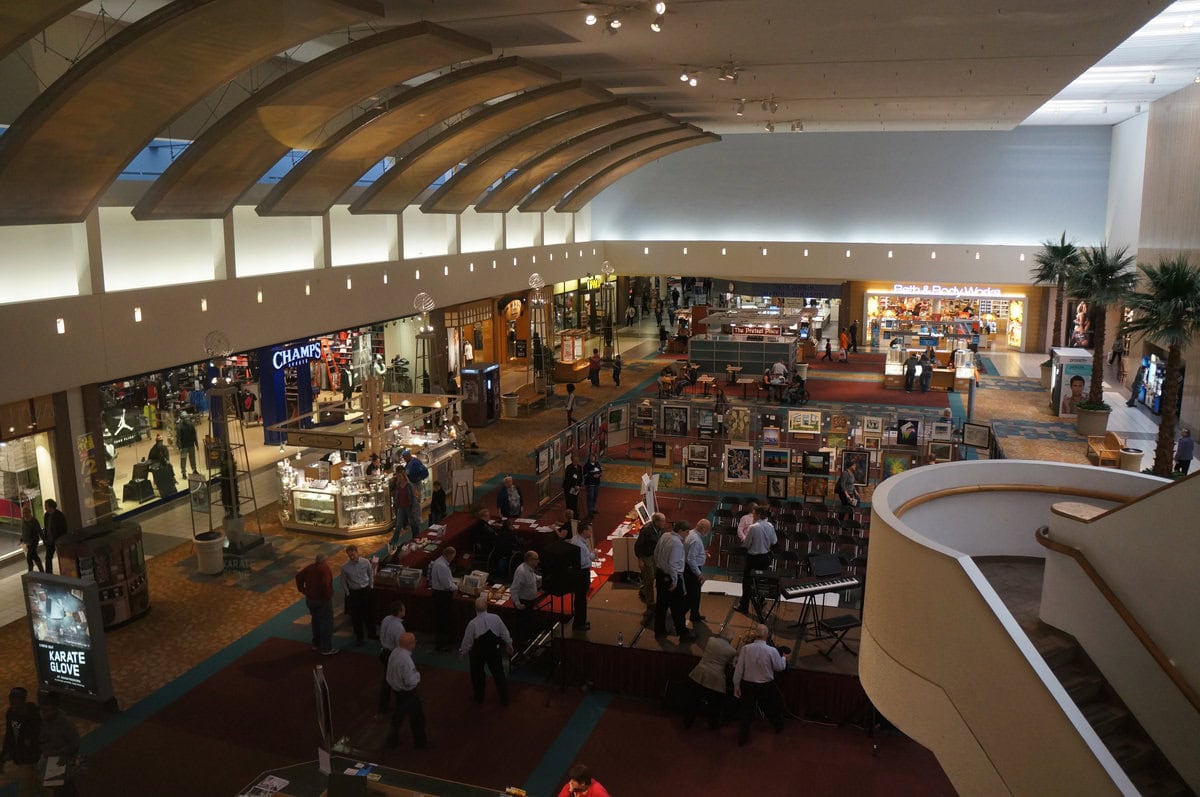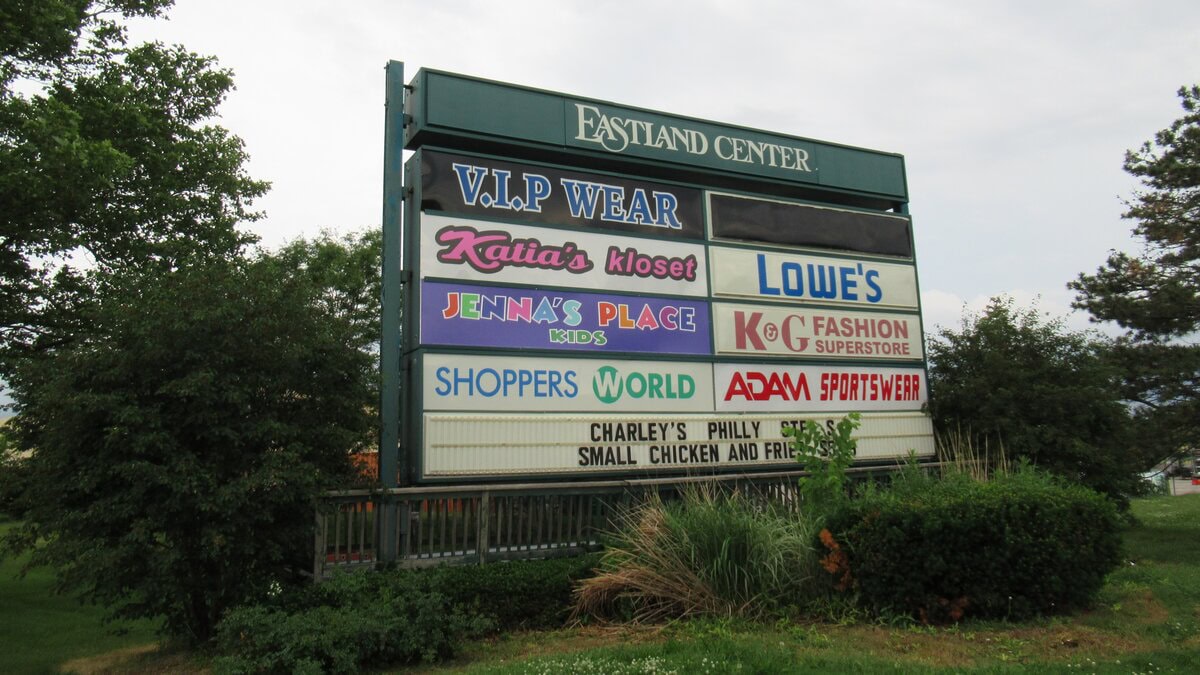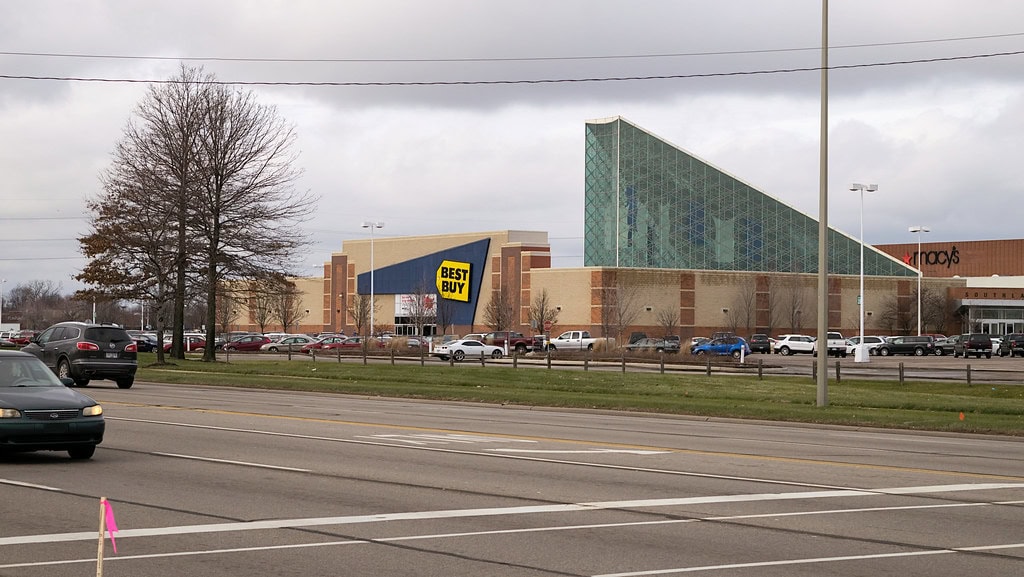Early Retail Beginnings on Big Beaver Road
On April 14, 1967, Saks Fifth Avenue opened a 70,000 square foot store in Troy, Michigan, a stand-alone anchor that set the stage for a new kind of shopping corridor.
Two years later, in 1969, Somerset Mall opened beside it, designed by Louis G. Redstone Associates and anchored by Bonwit Teller, with about 35 specialty retailers filling out the roster.
Stores like FAO Schwarz, Abercrombie & Fitch, Mark Cross, and I. Miller gave the one-floor center an upscale profile from its earliest days.
The partnership of Saks and Bonwit Teller defined Somerset's first identity, balancing a national draw with a style-conscious appeal that reached deep into the Detroit suburbs.
Shoppers could find high-end fashion on one side, toys and accessories on the other, and the new mall quickly built a reputation for its curated lineup.
In 1988, Bonwit Teller undertook a large renovation to modernize its space, but by 1990, the chain was bankrupt and its Somerset store closed, leaving Saks as the primary anchor.
Even with one anchor shuttered, the site remained active enough to hold its ground until redevelopment arrived in the early 1990s.
The foundation laid in these early years proved durable, giving Somerset a foothold as a regional destination.
For many residents, a visit here soon became one of the central things to do north of Detroit, MI, tying Troy's name to shopping in a way that endures today.
Reinvention as Somerset Collection
By 1991, the Bonwit Teller space sat empty, and the owners decided to reposition the property with a broader vision.
In 1992, the complex was reintroduced under a new name: Somerset Collection.
Construction added a second level, giving the mall a modern profile and room for new anchors.
Neiman Marcus opened a 141,000 square foot store on the site where Bonwit Teller once stood, bringing another national name into the mix.
Smaller but carefully chosen tenants arrived at the same time.
Barneys opened a 17,000 square foot store, while Crate & Barrel established a 13,000 square foot location.
Tiffany & Co. joined the roster, placing Somerset alongside retail destinations better known for luxury.
For shoppers, the combination of department stores and specialty brands made the mall feel like a single address with multiple identities.
The changes set Somerset Collection apart from its earlier form.
Saks remained an anchor, but the arrival of Neiman Marcus shifted attention and drew different customers.
Barneys and Crate & Barrel diversified the floor plan, ensuring that furniture and fashion could stand alongside each other.
By the end of 1992, Somerset Collection had moved beyond its original footprint and entered a new cycle of expansion that matched the retail trends of the decade.
Expansion Across Big Beaver
A major turning point arrived on August 11, 1996, when Somerset North opened its doors.
Built for $30 million and designed by JPRA Architects, the three-story expansion added 940,000 square feet across Big Beaver Road.
Nordstrom introduced its first Michigan store, while Hudson's, later Marshall Field's, and then Macy's, opened as a co-anchor.
To connect the original Somerset South with the new wing, developers installed a 700-foot enclosed skywalk.
The bridge included moving walkways, one of the first such features in an American shopping center, allowing steady circulation between the two buildings.
Somerset Collection now functioned as a single property with two large anchors on either side of the road. Renovation followed soon after.
By late 1998, Saks expanded its store by 40,000 square feet, and a new parking structure opened to handle the added traffic.
Crate & Barrel added an extra floor dedicated to furniture sales, while Banana Republic expanded as well.
These moves reflected both rising customer demand and the need to align with the national retail growth of the late 1990s.
By the end of the decade, Somerset Collection had doubled in scale.
The expansion reinforced the mall's status as a regional draw and gave it the structure it still relies on today.
Design Innovations and Cultural Role
After the large-scale additions of the 1990s, attention turned to the look and feel of the property itself.
In 2004, Somerset South completed a renovation that added glass elevators, a skylight running the length of the building, and new fountain systems created by WET.
Lighting design by Paul Gregory of Focus Lighting helped shape the interior, giving the retail floors a sharper presence without clutter.
Art was placed alongside retail as part of the plan.
The Sorvikivi Floating Stone fountain from Finland became one of the mall's visual landmarks, a sphere turning gently on water pressure.
Its presence made the space feel less like a standard commercial center and more like a carefully staged environment.
Customers encountered the sculpture in the same way they passed storefront windows, with both working together to hold attention.
The mall's design also traveled beyond Michigan.
JPRA Architects later used Somerset Collection as a model when creating the Mall at Millenia in Orlando, carrying over similar open spans and architectural features.
At Somerset, kiosks were deliberately avoided, leaving walkways free and views across levels uninterrupted.
Programming added another layer.
Events included seasonal shows, yoga classes, and promotions run by tenants, giving the property a rhythm that matched both retail sales and cultural display.
Unfinished Projects and Retail Shifts
In 2009, The Forbes Company purchased land next to the mall for a development called the Pavilions of Troy.
Approved by city officials, the open-air plan aimed to add mixed-use elements, but it never advanced beyond early stages.
The empty parcel remained a reminder of ambitions that didn't translate into new construction.
Other experiments did move forward. In 2011, Somerset Collection CityLoft opened in downtown Detroit with pop-up shops along Woodward Avenue.
For several summers, stores from Troy set up temporary retail there, later extending into holiday formats.
It connected suburban brands to Detroit's traditional shopping district, if only on a short-term basis.
Inside the mall, tenants continued to change.
In 2012, Saks Fifth Avenue underwent a renovation positioned as a capital investment in a strong-performing site.
The Peacock Cafés' food court gained a Chick-fil-A in 2016, its first presence in Metro Detroit beyond airports and college campuses.
In 2017, Zara opened its first Michigan location on two levels of the Macy's wing.
These updates marked a steady adjustment in the tenant mix, keeping Somerset active through years of retail turnover.
New Luxury Arrivals and Tenant Growth
By 2023, Somerset Collection had adjusted its lineup with a wave of new arrivals.
Prada, Gucci Men's Store, Moncler, Balenciaga, Breitling, Hermès, Diptyque, Dior, and Vuori were added to the roster, strengthening the property's position in luxury while mixing in activewear and lifestyle brands.
The approach gave the mall a layered profile, with international fashion houses sitting alongside newer specialty names.
That pace carried into 2025. In June, Swatch opened its first Michigan store inside Somerset North, a 1,250 square foot boutique on Level 1.
The shop introduced Bioceramic watches such as the MoonSwatch and SCUBAQUA, and set aside an area for the Flik Flak line aimed at younger customers.
For Somerset, the choice by Swatch to enter the state market through Troy underscored its role as a dependable launch site for global brands looking at the region.
The anchors, Macy's, Nordstrom, Saks Fifth Avenue, and Neiman Marcus, remained in place, making Somerset one of the few malls in the country with all four still operating.
Brands like Arhaus, Apple, LensCrafters, Williams Sonoma, and Pottery Barn added contrast, keeping the mix broader than fashion labels at the highest tier.
With more than 180 stores spread across 1.45 million square feet, the property showed how tenant growth continued to shape its presence even as national retail chains faced cutbacks elsewhere.
Somerset West: Beyond Retail
The property surrounding Somerset also moved into a new phase. In 2024, demolition cleared the former Kmart headquarters site, a 40-acre parcel owned by a Forbes and Frankel venture.
The cleared land became the base for Somerset West, a mixed-use development tied to the mall's long-term plans.
In April 2025, Troy's Planning Commission reviewed an updated concept that added public park space, adjusted parking access, and strengthened pedestrian links.
By May, the Commission recommended approval for redevelopment.
Less than a month later, in June, the City Council gave its consent for Phase 1A, which allowed grading, private road construction, and utility installation.
Among the conditions was the dedication of 17 acres to the University of Michigan and a 120-foot buffer along Cunningham Drive.
These early steps provided the groundwork for the site's first vertical projects.
In August 2025, Michigan Medicine held a groundbreaking for the Frances and Kenneth Eisenberg Troy Center for Specialty Care, a $250 million investment.
Together, the medical center and infrastructure work marked the beginning of Somerset West's shift from a vacant corporate campus into an active extension of the complex.


